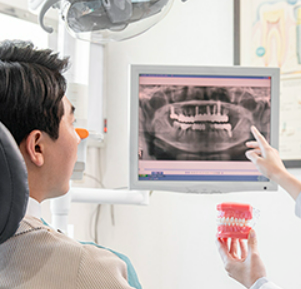What Type of Gum Treatment is Right For You?
To avoid the need for gum treatment, the best way to maintain a healthy mouth is to practice good oral hygiene at home. Using a special brush designed for plaque control is essential for a healthy mouth, and brushing with an antibacterial mouth rinse is an excellent habit to start. Regular dental visits are also important to monitor the progress of gum disease. The dentist will check your bite, clean out any tartar and plaque, and examine your gums. You will likely need several visits over the course of a year, depending on how severe your condition is.
Patients with diabetes may also need gum treatment to maintain their overall dental health. Smoking and daily oral hygiene are essential for people with diabetes. The dentist can perform flap surgery to remove diseased tissue and clean the root surfaces. Once the tissues reattach to the teeth, they are unlikely to become infected again. This procedure will take several sessions to complete. You can even make appointments online or over the phone. To learn more about the different types of gum treatments, visit your local dentist.
Choosing a periodontal treatment based on the individual’s needs can help to prevent the development of periodontal disease. There are many options available, and they are all considered safe. The first step is determining the best treatment method for you. There are many types of gum treatments, and the dentist will recommend the right one for your situation. If you have periodontal disease, the most effective approach will be to work with a qualified dental practitioner to determine the best option.
If you’re a diabetic, you should consult a dentist for gum treatment.
This procedure can help your gums reattach to your teeth. It requires a surgical procedure, and it involves pulling back the gum tissues to remove the diseased tissue. After the surgery, the gum tissues are sutured to the teeth. A surgeon will clean the surface of the root surfaces and reattach them to the surrounding gum tissue. This will ensure that bacteria cannot attach to your teeth.

Scaling and root planing are common methods for preventing gum disease. During this procedure, the dentist will remove plaque and tartar from the root surfaces of the teeth. After that, he will use sutures to attach the tissues to the tooth. These procedures are less invasive than other procedures and can be performed with local anesthesia. A doctor can also perform surgery on your gums, which can lead to a more healthy smile.
The best gum treatment for diabetes patients is a combination of a gum graft and healthy tissue. A gum graft is made of tissue from the roof of the mouth. It is stitched onto either side of a tooth that is exposed. The new tissue will help in restoring a healthy jawbone. This procedure is not recommended for diabetics. It is a cosmetic procedure and can be expensive. When you have gum disease, it is essential to see a dentist for regular cleanings for treatment.
Surgical procedures can be used to treat gum disease.
A surgeon will remove diseased tissue and sutures the gums to the teeth. If the diseased tissue is too prone to infection, then this is a good option for treating it. It will help you avoid further problems and keep your teeth healthy. If you have a serious dental condition, you should consult with a professional right away to get the right treatment. These professionals will be able to provide you with an accurate diagnosis and treatment options.
During gum treatment, Dr. Ressler uses a surgical operating microscope to guide the instruments under the gum line, encouraging bone regeneration. The procedure is more comfortable than ever thanks to new technologies that reduce noise and vibration. 강남역치과 The patient will feel no pain and will have a healthier mouth after the procedure is finished. If you suffer from chronic or severe cases of gum disease, you’ll need to undergo surgical treatment to restore your oral health. Fortunately, there are some non-surgical procedures that can treat gum disease.
Traditional gum surgery is not a good option for people with mild or moderate cases of gum disease. In addition to causing pain, this procedure can also cause bone loss. The resulting pockets are usually very deep, and the gums will have to be removed completely. If this is the case, an antibiotic can help with the symptoms of the disease. The antibiotics will work by reducing the bacteria in the mouth. Moreover, the antibacterial mouthwash will help you reduce the bacterial plaque in your mouth.